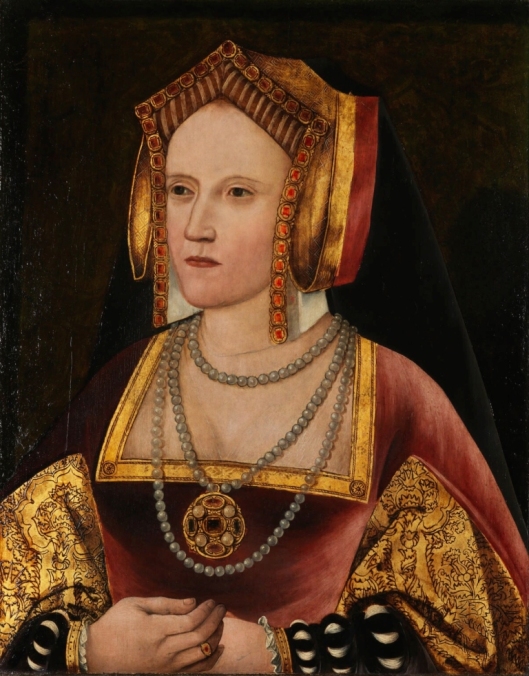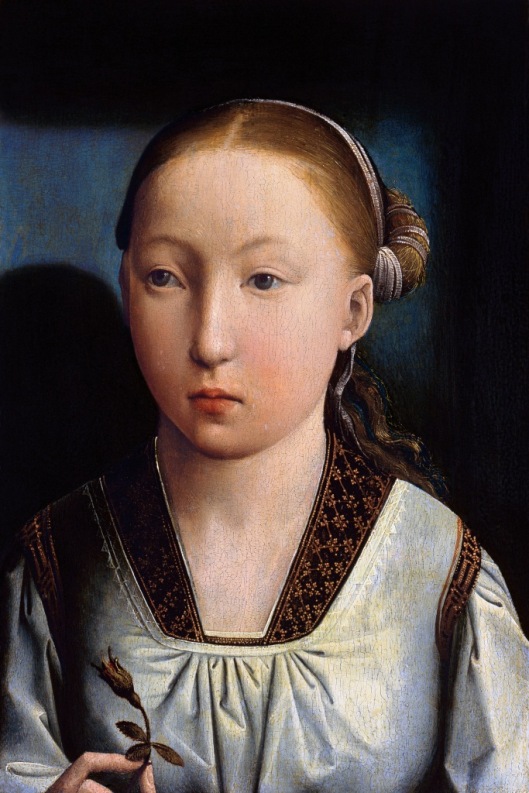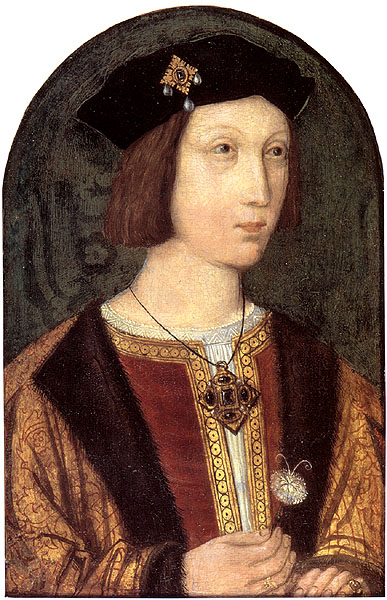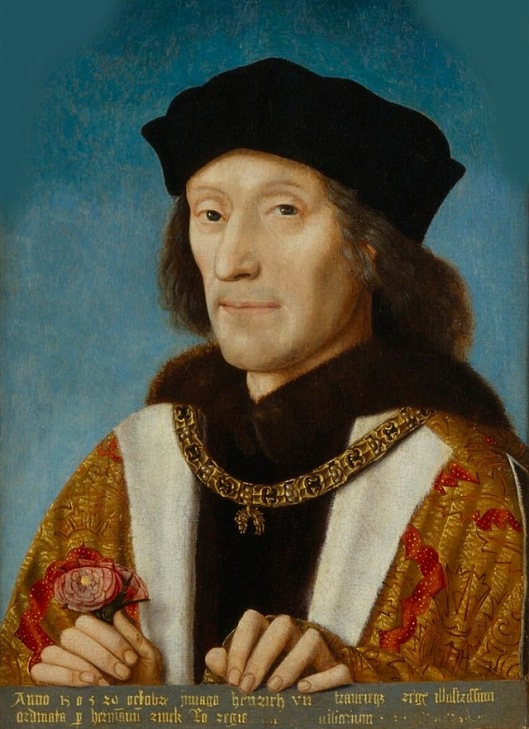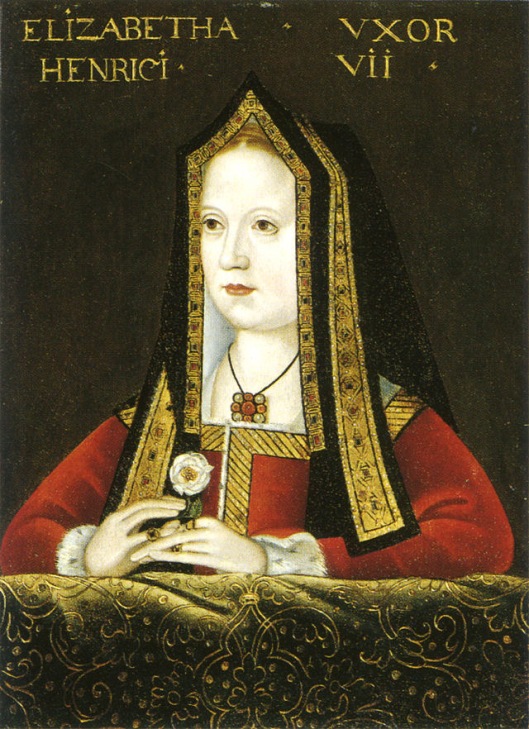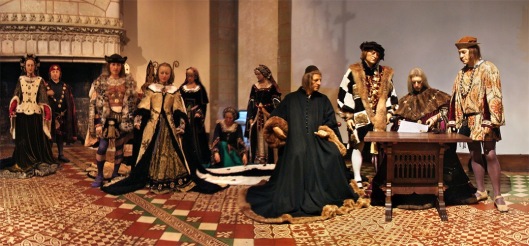Philipp of Habsburg was the son of Holy Roman Emperor Maximilian I by his first wife Mary, Duchess of Burgundy in her own right. Philipp was less than four years old when his mother died, and upon her death, he inherited the greater part of the Duchy of Burgundy and the Burgundian Netherlands as Philippe IV. In 1496, his father arranged for him to marry Joanna of Castile, second daughter of Fernando II-V and Isabella I, rulers of Aragon and Castile respectively.
At Isabella’s death on November 26, 1504 and the crown of Castile passed to their daughter Joanna, by the terms of their prenuptial agreement and Isabella‘s last will and testament, and her husband Fernando lost his monarchical status in Castile. Joanna’s husband Philipp of Habsburg, Duke of Burgundy became de jure uxoris King of Castile, as Felipe I, but died in 1506, and Joanna ruled in her own right.
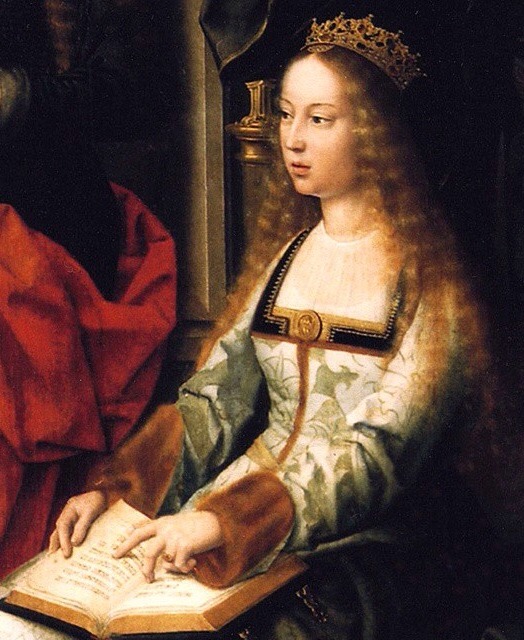
Isabella I, Queen of Castile.
In 1504, after a war with France, Fernando became King of Naples as Ferdinand III, reuniting Naples with Sicily permanently and for the first time since 1458. In 1506, as part of a treaty with France, Fernando (aged 54) married Germaine of Foix of France (aged 18). Germaine’s father was Jean of Foix, Viscount of Narbonne and son of Queen Eleanor of Navarre. Her mother, Marie of Orléans, was the sister of King Louis XII of France. Sadly, Fernando’s only son and child of this union, Juan, Prince of Girona born on May 3, 1509, but died shortly after birth. (Had the child survived, the personal union of the crowns of Aragon and Castile would have ceased.) In 1512, Fernando became King of Navarre by conquest.
As mentioned, Fernando II, lost his monarchical status in Castile although his wife’s will permitted him to govern in Joanna’s absence or, if Joanna was unwilling to rule herself, until Joanna’s heir (Infante Carlos) reached the age of 20.
Fernando refused to accept this, therefore he minted Castilian coins in the name of “Fernando and Joanna, King and Queen of Castile, León and Aragon,” and, in early 1505, persuaded the Cortes that Joanna’s “illness is such that the said Queen Doña Joanna our Lady cannot govern”. The Cortes then appointed Ferdinand as Joanna’s guardian and the kingdom’s administrator and governor.
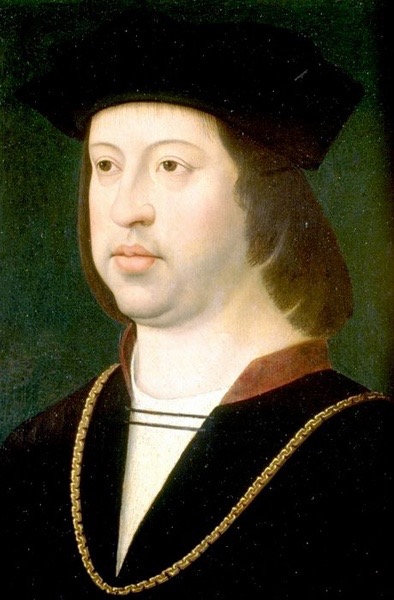
Fernando II-V, King of Aragon and Castile.
Joanna’s husband, Philipp of Habsburg was unwilling to accept any threat to his chances of ruling Castile and also minted coins in the name of “Felipe and Joanna, King and Queen of Castile, Léon and Archdukes of Austria, etc.” In response, Ferdinand embarked upon a pro-French policy, marrying Germaine de Foix, niece of Louis XII of France (and his own great-niece), in the hope that she would produce a son to inherit Aragon and perhaps Castile.
Fernando’s remarriage merely strengthened support for Felipe and Joanna in Castile, and in late 1505, the pair decided to travel to Castile. Leaving Flanders on January 10, 1506, their ships were wrecked on the English coast and the couple were guests of Henry, Prince of Wales, (later Henry VIII) and Joanna’s sister Catherine of Aragon at Windsor Castle. They weren’t able to leave until April 21, by which time civil war was looming in Castile.
Felipe apparently considered landing in Andalusia and summoning the nobles to take up arms against Ferdinand in Aragon. Instead, he and Joanna landed at A Coruña on April 26, whereupon the Castilian nobility abandoned Fernando en masse. Fernando met Felipe at Villafáfila on 27 of June 1506 for a private interview in the village church. To the general surprise Ferdinand had unexpectedly handed over the government of Castile to his “most beloved children”, promising to retire to Aragon. Felipe and Fernando then signed a second treaty secretly, agreeing that Joanna’s “infirmities and sufferings” made her incapable of ruling and promising to exclude her from government and deprive the Queen of crown and freedom.
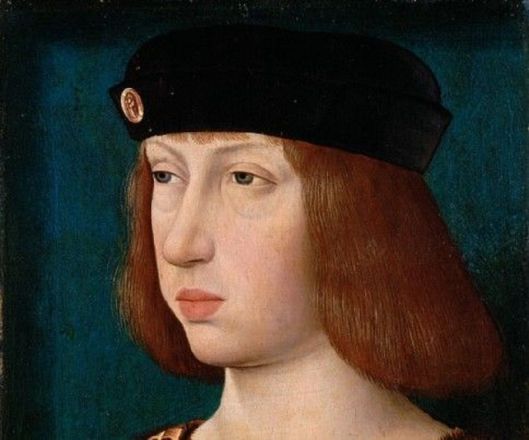
Felipe I, King of Castile, Duke of Burgundy and Archduke of Austria.
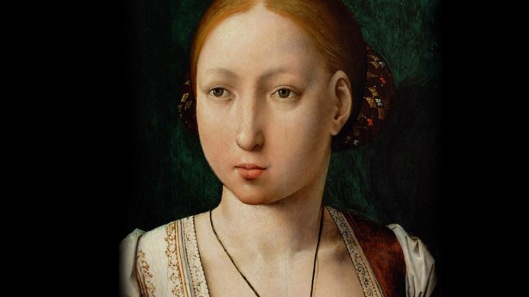
Joanna, Queen of Castile.
Fernando promptly repudiated the second agreement the same afternoon, declaring that Joanna should never be deprived of her rights as Queen Proprietress of Castile. A fortnight later, having come to no fresh agreement with Felipe, and thus effectively retaining his right to interfere if he considered his daughter’s rights to have been infringed upon, he abandoned Castile for Aragon, leaving Felipe to govern in Joanna’s stead.
Felipe’s death
By virtue of the agreement of Villafáfila, the procurators of the Cortes met in Valladolid, Castile on July 9, 1506. On 12 July, they swore allegiance to Felipe I and Joanna together as King and Queen of Castile and León and to their son Carlos as their heir-apparent. This arrangement only lasted for a few months.
On September 25, 1506, Felipe died after a five-day illness in the city of Burgos in Castile. The official cause of death was typhoid fever. The general opinion publicly declared was that his father-in-law Fernando II, who had always disliked his foreign Habsburg origins and with whom he never wanted to share power, had had him poisoned by “bocado.” Joanna was pregnant with their sixth child, a daughter named Catherine (1507–1578), who later became Queen of Portugal as the spouse of King João III of Portugal (1521-1557).
Fernando II and Joanna met at Hornillos, Castile on July 30, 1507. Fernando then constrained her to yield her power over the Kingdom of Castile and León to himself. On August 17, 1507, three members of the royal council were summoned – supposedly in her name – and ordered to inform the grandees of her father Fernando II’s return to power: “That they should go to receive his highness and serve him as they would her person and more.” However, she made it evident that this was against her will, by refusing to sign the instructions and issuing a statement that as queen regnant she did not endorse the surrender of her own royal powers.
Nonetheless, she was thereafter queen in name only, and all documents, though issued in her name, were signed with Fernando’s signature, “I the King”. He was named administrator of the kingdom by the Cortes of Castile in 1510, and entrusted the government mainly to Archbishop Cisneros. He had Joanna confined in the Royal Palace in Tordesillas, near Valladolid in Castile, in February 1509 after having dismissed all of her faithful servants and having appointed a small retinue accountable to him alone. At this time, some accounts claim that she was insane or “mad”, and that she took her husband’s corpse with her to Tordesillas to keep it close to her.
Fernando II ended his days embittered: his second marriage to Germaine de Foix had failed to produce a surviving male heir, leaving his daughter Joanna as his heiress-presumptive. Fernando resented that upon his death, Castile and Aragon would effectively pass to his foreign-born-and-raised grandson Carlos to whom he had transferred his hatred of Felipe I. He had hoped that his younger grandson and namesake, Archduke Ferdinand who was Carlos I’s brother and had been born and raised in Castile, would succeed him. Fernando named Ferdinand as his heir in his will before being persuaded to revoke this bequest and rename Joanna and Carlos as his heirs-presumptive instead.
When Fernando II died in 1516, the Kingdoms of Castile and León, and Aragon and their associated crowns and territories/colonies, would pass to Joanna I and her son as King Carlos I. With Carlos still in Flanders, Aragon was being governed after Fernando II’s death by his bastard son, Alonso de Aragón. Meanwhile, Castile and León, already subjects of Joanna, were governed by Archbishop Cisneros as regent. A group of nobles, led by the Duke of Infantado, attempted to proclaim the Archduke Ferdinand as King of Castile but the attempt failed.
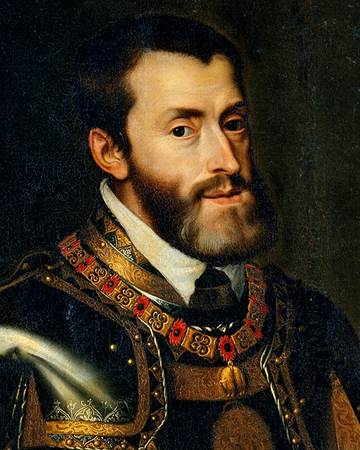
Carlos I/Karl V, Holy Roman Emperor, King of Spain, Duke of Burgundy and Archduke of Austria.
In October 1517, seventeen-year-old Carlos I arrived in Asturias at the Bay of Biscay. On November 4, he and his sister Eleanor met their mother Joanna at Tordesillas – there they secured from her the necessary authorisation to allow Carlos to rule as her co-King of Castile and León and of Aragon. Despite her acquiescence to his wishes, her confinement would continue. The Castilian Cortes, meeting in Valladolid, insulted Carlos by addressing him only as Su Alteza (Your Highness) and reserving Majestad (Majesty) for Joanna. However, no one seriously considered rule by Joanna a realistic proposition.
In 1519, Carlos I now ruled the Kingdom of Aragon and its territories and the Kingdom of Castile and León and its territories, in personal union. In addition, that same year Carlos was elected Holy Roman Emperor as Karl V. The kingdoms of Castile and Aragon (and Navarre) remained in personal union. Carlos I is recognized as the first king of a United Spain. It is interesting to note that during the regency of Fernando II-V, many called him the King of Spain as distinct from his daughter Joanna, “queen of Castile”. Despite Carlos ruling over the main Spanish kingdoms, the crowns of the Kingdoms of Castile and León and Aragon were still ruled in personal union of the king and were not legally united into a single Kingdom of Spain until the Bourbon King Felipe V in the early 18th century.
Felipe V signed the Decreto de Nueva Planta in 1715. This new law revoked most of the historical rights and privileges of the different kingdoms that formed the Spanish Crown, especially the Crown of Aragon, unifying them under the laws of Castile, thus unifying Spain under one legal system.
Carlos I eventually abdicated as Emperor of the Holy Roman Empire in favour of his brother Ferdinand, and the personal union with the Spanish kingdoms was dissolved. In Spain Carlos’s son became the new Spanish king as Felipe II.

